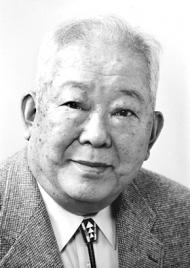An emoticon is a metacommunicative pictorial representation of a facial expression which in the absence of body language and prosody serves to draw a receiver's attention to the tenor or temper of a sender's nominal verbal communication, changing and improving its interpretation. It expresses - usually by means of punctuation marks - a person's feelings or mood and can include numbers and letters, as well. In the most recent years, as the epidemic of social media and texting is at an all time high, emoticons have played a significant role in communication through technology. These emoticons offer another range of "tone" and feeling through texting that portrays specific emotions through facial gestures while in the midst of cyber communication.
Origin of the term
The word is a portmanteau word of the English words emotion and icon. In web forums, instant messengers and online games, text emoticons are often automatically replaced with small corresponding images, which came to be called emoticons as well. Emoticons for a smiley face :-) and sad face :-( appear in the first documented use in digital form. Certain complex character combinations can only be accomplished in a double-byte language, giving rise to especially complex forms, sometimes known by their romanized Japanese name of kaomoji.
The use of emoticons can be traced back to the 19th century, and they were commonly used in casual and humorous writing. Digital forms of emoticons on the Internet were included in a proposal by Scott Fahlman of Carnegie Mellon University in Pittsburgh, Pennsylvania, in a message on 19 September 1982.
History
The National Telegraphic Review and Operators Guide in April 1857 documented the use of the number 73 in Morse code to express "love and kisses" (later reduced to the more formal "best regards"). Dodge's Manual in 1908 documented the reintroduction of "love and kisses" as the number 88. Gajadhar and Green comment that both Morse code abbreviations are more succinct than modern abbreviations such as LOL.
A New York Times transcript from an Abraham Lincoln speech written in 1862 contains "(applause and laughter ;)"; there is some debate as to whether it is a typo, a legitimate punctuation construct, or an emoticon.
In 1862, Victor Hugo wanted to find out how sales of his new book Les Misérables were doing; he sent a telegram to his publisher that consisted of a single character: "?". The reply was also a single character: "!" This telegram – which is sometimes attributed to Oscar Wilde – is cited in the Guinness Book of World Records as the world's shortest telegram.
Four vertical typographical emoticons were published in 1881 by the U.S. satirical magazine Puck, with the stated intention that the publication's letterpress department thus intended to "lay out ... all the cartoonists that ever walked." In 1912, Ambrose Bierce proposed "an improvement in punctuation – the snigger point, or note of cachinnation: it is written thus \___/! and presents a smiling mouth. It is to be appended, with the full stop [or exclamation mark as Bierce's later example used], to every jocular or ironical sentence".
Emoticons had already come into use in sci-fi fandom in the 1940s, although there seems to have been a lapse in cultural continuity between the communities.
The September 1962 issue of MAD Magazine published an article titled "Typewri-toons." The piece, featuring typewriter-generated artwork credited to "Royal Portable," was entirely made up of repurposed typography, including a capital letter P having a bigger bust than a capital I, a lowercase b and d discussing their pregnancies, an asterisk on top of a letter to indicate the letter had just come inside from a snowfall, and a classroom of lowercase n's interrupted by a lowercase h "raising its hand." Two additional "Typewri-toons" articles subsequently appeared in Mad, in 1965 and 1987.
In 1963 the "smiley face", a yellow button with two black dots representing eyes and an upturned thick curve representing a mouth was created by freelance artist Harvey Ball. It was realized on order of a large insurance company as part of a campaign to bolster the morale of its employees and soon became a big hit. This smiley presumably inspired many later emoticons; the most basic graphic emoticon that depicts this is in fact a small yellow smiley face.
In a New York Times interview in April 1969, Alden Whitman asked writer Vladimir Nabokov: "How do you rank yourself among writers (living) and of the immediate past?" Nabokov answered: "I often think there should exist a special typographical sign for a smile – some sort of concave mark, a supine round bracket, which I would now like to trace in reply to your question."

